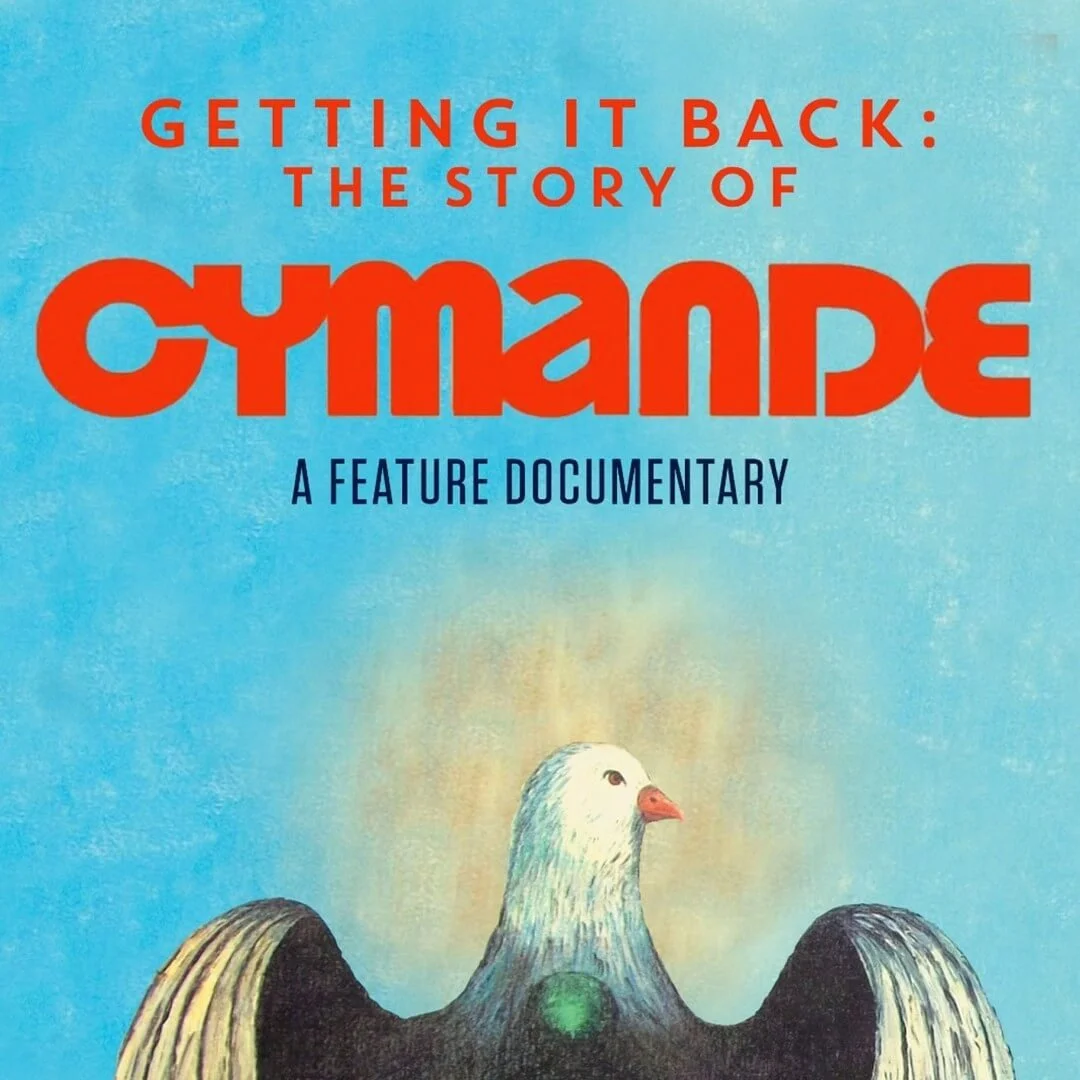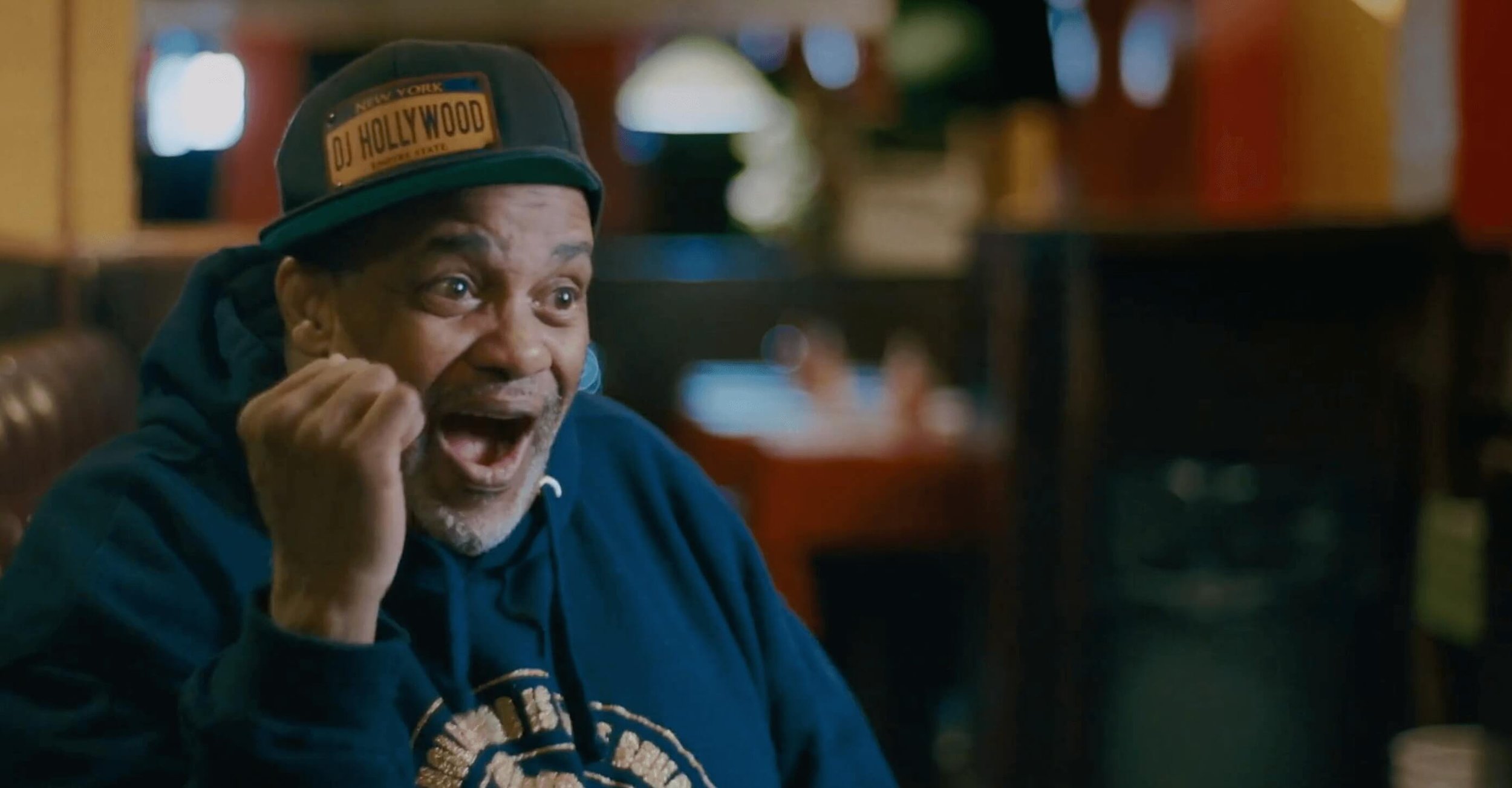If there’s one message to take away from the documentary Getting It Back – let’s call it an enduring feeling – then try gratitude. For the power of music to bring people together in a moment, for a generation, across different generations.
It may not happen when or how we expect it to, but there is an inevitability to greatness. And how we get there is the engine of a good story. Cymande’s tale is an uplifting one but it doesn’t shy away from the realities of their time or any time in life.
Worldwide recognition eluded the nyah-rock brotherhood in the 70s, particularly in a post-Windrush Britain blighted by racial division and police harassment. Yet their spiritually fortified rhythms and positive messages created undeniable ripples through popular music, as we later find out in this documentary.
A combination of soul, jazz, calypso, roots, rock and Rastafari so galvanising and affecting that, as journalist Kevin Le Gendre says, it could not die. But bodies and minds dwell closer to the realms of mortality and it’s in the context of community, calling and the toll of resistance that director Tim Mackenzie-Smith’s film is most revealing.
Like so many of my generation, I first came across the band on The Fugees’ The Score’, the title track from their huge second album, which has sold more than 15 million copies worldwide. Producer Diamond D sampling Cymande’s 10-minute twilight odyssey ‘Dove’ from their first record. (There was also that time in the chillout tent at Creamfields but that’s another story.)
‘Dove’ was the strongest of the non-singles tracks and stayed in my mind, not least because of that elliptical guitar line from Patrick Patterson. It beckons us over the edge, into the unknown. Diamond D was hooked by it too as he dug in the crates, knowing also that The Fugees’ Wyclef was a guitar man.
Unfortunately, sampling without credit was the done thing in early 90’s hip-hop and it would take a lawsuit for Cymande to begin to get theirs. Money aside, however, it’s undeniable that hip-hop has given a second life to countless overlooked and underappreciated artists. So it makes sense to open with this revival record as the establishing shot.
The film cuts from footage of My Morning Jacket’s Jim Jones playing the vinyl and sharing his discovery story, to tight frames of the band playing in the studio as evocative images of the 70s flash up and key talking heads offer opening gambits. The sequence builds mood and anticipation for what follows.
The momentum of Cymande’s rise is mirrored by that of the film. Within the first 20 minutes, through the drive of producer John Schroeder, the band has formed around a shared ethos in South London, and flown over to the US to play to crowds of more than 30,000 on the same bills as Al Green and Jerry Butler. They were the first British band to play the Harlem Apollo.
Back home there was no such euphoria. Starved of TV exposure and weary after producing three albums in four years, the band decided to take a break. Pablo Gonsales called it “a split”. Cymande’s conga player, who comes across as this sage and ethereal spirit in the film, took it harder than the others (“playing great music and not fulfilling your destiny”). He returned to Jamaica.
Drummer Sam Kelly and alto sax player Mike ‘Bami’ Rose joined other bands, later playing with anyone from Robert Plant and Ben E King to the Jazz Warriors. Patterson and bass player Steve Scipio became lawyers. “We didn’t come off the road to go on the dole,” Scipio explains. “We just found another way of contributing to our community.” And providing for their own families, of course.
Meanwhile, Cymande’s positivity had reverberated from Brixton to the Bronx and was about to help incubate the seeds of hip-hop. Their biggest contribution was the song ‘Bra’ (“Time has been lost in trying/We have been left outside/Looking at passions dying/Emotions grow strong all the time/But it's alright, we can still go on”).
It wasn’t just the words and those joyous horns. There was also the breakdown with that four-four beat you just had to rock to, from the block to Nicky Siano’s The Gallery. But if only the DJ could make it last a while longer. Well, now you mention it…
The way DJ Hollywood recalls hearing ‘Bra’ drop at a party will give you life for months. “If you got a cowbell, you gonna beat the sh£$ outta it” is a contender for line of the doc (closely followed by a young Peanut Butter Wolf making Cymande rhyme with lemonade).
Then DJ Jazzy Jay demonstrates how to bring that beat back and I swear, you’ll be on your feet.
Into the next decade, you had the figures such as DJ and broadcaster Norman Jay, plus Soul II Soul architect Jazzie B transmitting Cymande’s depth of feeling and dancefloor consciousness to a new crowd in the UK. Ruthless Rap Assassins also got ‘The Message’ but juxtaposed it with unfulfilled dreams in a different age of disillusionment. And there’s Raze on Top of the Pops after scoring one of the first house hits using the ‘Bra’ bassline.
Over in the US, the likes of Prince Paul with De La Soul and Masta Ace were bringing back the old songs, making them new again as Maseo says. They and fellow New Yorker Little Louie Vega thought Cymande were from round the way, such was the kinship they felt with this vibe. Over on the west coast, Cut Chemist would listen out for bassline melodies because of Steve Scipio, and slip Cymande into his sets to see “who’s on the level” in the room.
Director Mackenzie-Smith found Cymande through a mixtape, which set in motion his lifelong love of the band. He still listens to ‘Bra’, his favourite tune of all time, every day and the documentary radiates that depth of obsessive fandom. It had to in order to sustain him and editor/co-producer Matt Wyllie over five long years beside their other commercial work, a limited archive and the disruption of a global pandemic.
Later, the selection of ‘Dove’ as the portentous opening to a documentary about Anthony Joshua in the build-up to his world heavyweight title showdown with Vladimir Klitschko aroused the attention of the band and they decided to film and see where the story would take them.
The internet has obviously played a huge part in the resurgence of the band and nothing says that better than a montage of multifarious YouTube covers and dance routines. It’s a joy to see, while watching the band play their first comeback gig in front of a rapturous crowd of awfully young people is a real punch-the-air moment.
Particularly when you consider that alto sax player Derek Gibbs had put down his instrument for three decades to become an electrician and needed to train – no, to will – his ailing body to blow once again. Pablo got off his hospital bed, lungs increasingly on the verge of collapse, to hit the stage. “Mind over matter”, he tells us.
As Getting It Back reaches its final moments and we are introduced to new members of the band, it’s not unfathomable to imagine them becoming an Arkestra-type ensemble. Such is the humility and sense of purpose in the hearts and souls of its original members, Cymande has become more than a finite group.
They transcended individualism long ago, and that was even before the loss of Gonsales, lead saxophonist Ray Carless and influential collaborator Trevor Audley White. Cymande has become the not-so-secret password/access code for universal consciousness. A way to connect all the best parts of yourself with others. And that is worth waiting for.
Getting It Back is showing across the UK as part of the Doc’n Roll Festival until 12 November – from London and Exeter to Cardiff, Liverpool, Manchester and Glasgow.







